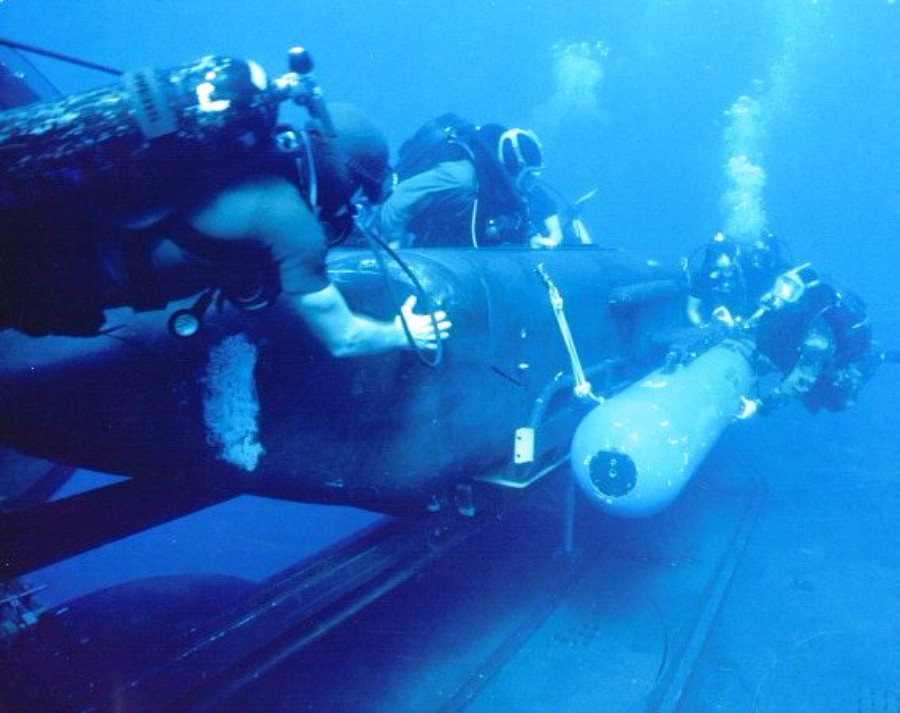Unmanned aerial systems, or drones, are changing the battlefield and the way militaries fight. Although drones have been operating for decades, the war in Ukraine is the first large-scale conventional conflict in which unmanned they play a big role.
Today, drones are used for everything, including strategic reconnaissance, tactical strikes against heavy weapon systems, and attacks on individual soldiers.
Seeing these developments, the U.S. military continues to invest in drone and counter-drone technology, seeking an advantage over near-peer adversaries like China and Russia.
However, these adversaries, especially China, are pouring money into drone technology as well – and Beijing seems to be taking the concept a step further with the construction of the first-ever dedicated drone carrier. (Iran had previously converted a merchant vessel to carry drones.)
First reported by Naval News, the Chinese drone carrier seems to have evaded the eyes and ears of the global military community until now.
According to the reporting, the Chinese Navy launched the drone carrier in December 2022. The warship is clearly different from a normal aircraft carrier. To begin with, satellite imagery shows that the drone carrier is significantly smaller than a conventional carrier. Specifically, it comes one-third shorter and one-half slimmer than a U.S. Nimitz-class carrier. Indeed, in terms of size, it is closer to the Casablanca escort carriers that the U.S. Navy used in World War II.
The warship under construction sports one flat deck that would only allow one aircraft to take off or land at a time, which is not how modern aircraft carriers are designed. Moreover, the imagery doesn’t show a space for an aircraft hangar, meaning that it wouldn’t be able to carry many aircraft. This evidence points to a novel drone carrier and not a light aircraft carrier – as the latter share similar features with fleet carriers.
Related: China was spotted using mock-ups of American stealth fighters to train its pilots
The Chinese aircraft carrier fleet

The Chinese military is getting ready for a conflict with the United States. Beijing is spending anywhere between $200 to $700 billion on its defense budget every year. (The divergence in the amounts has to do with the sourcing since China doesn’t release accurate official figures).
Today, the Chinese Navy is the largest in the world, able to field more than 700 warships and support vessels in case of a conflict. But when it comes to aircraft carriers, Beijing is still far behind the U.S. which has 11 fleet carriers and several light carriers. The Chinese Navy can field three aircraft carriers, with the newest undergoing sea trials.
The Liaoning (Type 001) is China’s oldest and is based on the hull of a decommissioned Russian Admiral Kuznetsov-class aircraft carrier. It’s been operational since 2019 but, being a Short Take-off, Barrier Arrested Recovery (STOBAR) carrier, its capabilities are more limited compared to American fleet carriers.
The Shandong (Type 002) is the second aircraft carrier of the Chinese navy and is completely made in China. However, its design is based on its sister ship, the Liaoning, and thus shares similar functional limitations in the number and type of aircraft it can carry and its launch rate (STOBAR carriers require aircraft with very high thrust-to-weight ratio). It entered operational service in 2019.
Finally, the Fujian (Type 003) is Beijing’s newest aircraft carrier. Unlike Liaoning and Shandong, the Fujian is a Catapult-Assisted Take-off, Barrier-Arrested Recovery (CATOBAR), and is similar to U.S. fleet carriers. Although it’s ready, it’s not operational yet as the Chinese navy is currently conducting sea trials. It is expected to enter service sometime this year.
Read more from Sandboxx News
- Samuel Dreben was one of the bravest men of the 20th century
- XQ-67A, Air Force’s drone wingman prototype, flies for first time
- The US Navy’s insane new air-to-air missile: The AIM-174
- Chicken or pasta? Air Force KC-46 tanker achieves 45-hour flight
- Video: Do Marines want to turn the MQ-9 Reaper into a stealth aircraft?










